

Josh Nevett
CarExpert's top five mid-size SUV reviews of 2025
22 Hours Ago
The CR-V VTi L7 is now the brand's seven-seater flagship in Australia. Can it serve as a viable stand-in for the now-defunct Odyssey MPV?
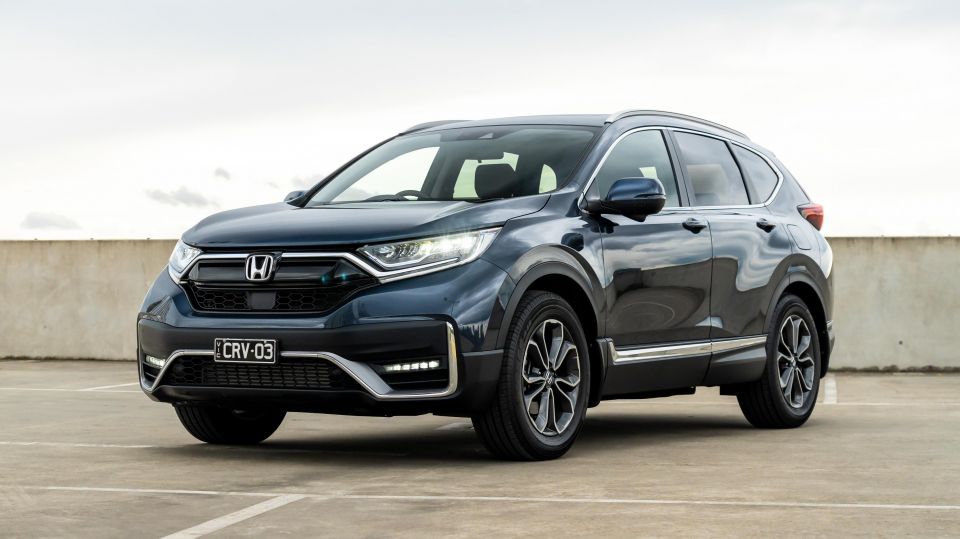
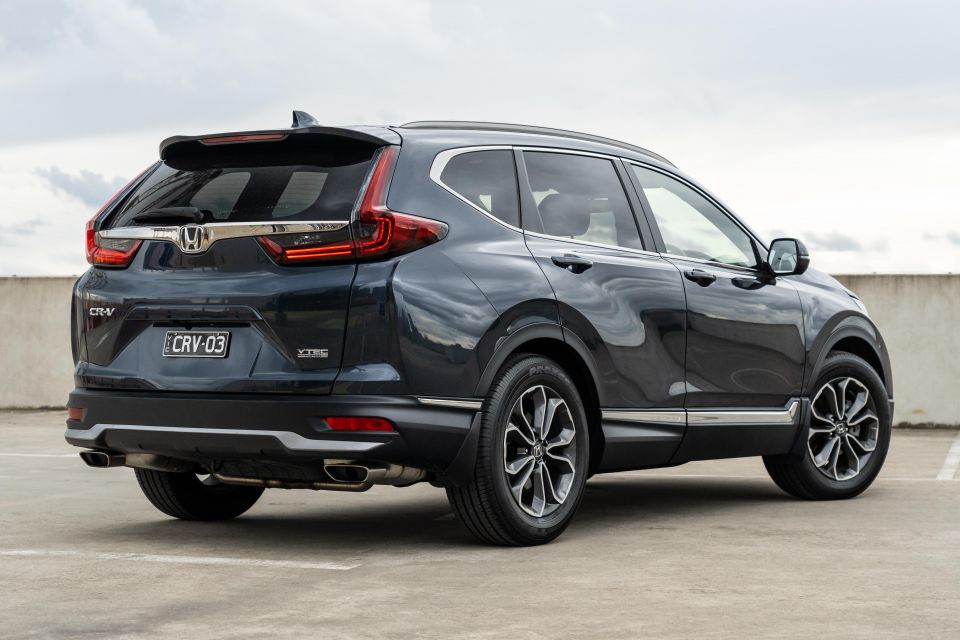

Quickly see how this car stacks up against its competition. Select any benchmark to see more details.
Where expert car reviews meet expert car buying – CarExpert gives you trusted advice, personalised service and real savings on your next new car.
The Honda CR-V is one of the oldest nameplates in the mainstream SUV segments, dating back to the late 1990s.
Now in its fifth generation, the Japanese brand’s popular mid-sized crossover might be getting on a bit (an all-new one has been revealed and should be here in 2023) but it’s still one of the few vehicles in its class to offer three rows of seats.
On test we have the 2022 Honda CR-V VTi L7, one of two seven-seat versions of the CR-V priced from just below $50,000 drive-away under Honda’s new agency sales strategy.

It competes with other medium-large SUVs like the Mitsubishi Outlander and Nissan X-Trail, as well as the (technically) large segment Skoda Kodiaq and Volkswagen Tiguan Allspace. All are based on mid-sized platforms and all offer 5+2 seating layouts.
At this price point the high-grade seven-seat CR-V is also competing with lower-grade versions of larger SUVs like the Hyundai Santa Fe and Kia Sorento.
So with a handful of pretty strong rivals, and the recent death of Honda’s Odyssey people mover, does the high-spec CR-V seven-seater make a case for itself in its final stage of life? Time to find out.
The CR-V VTi L7 is the second-highest variant in the line-up, priced from $49,500 drive-away. Only the five-seat VTi LX AWD is dearer, at $53,600 drive-away.
It’s $8500 more expensive than the cheaper VTi 7 ($40,900 D/A) and just under $6000 more than the special-edition VTi 7 +Luxe ($43,700 D/A) that was recently introduced as the current generation moves closer to runout.
No seven-seat versions of the CR-V are available with all-wheel drive in Australia, and the hybrid option offered in overseas markets is forbidden fruit for our market.
The next-generation CR-V should offer a petrol-electric option Down Under when it arrives, likely during the course of 2023.
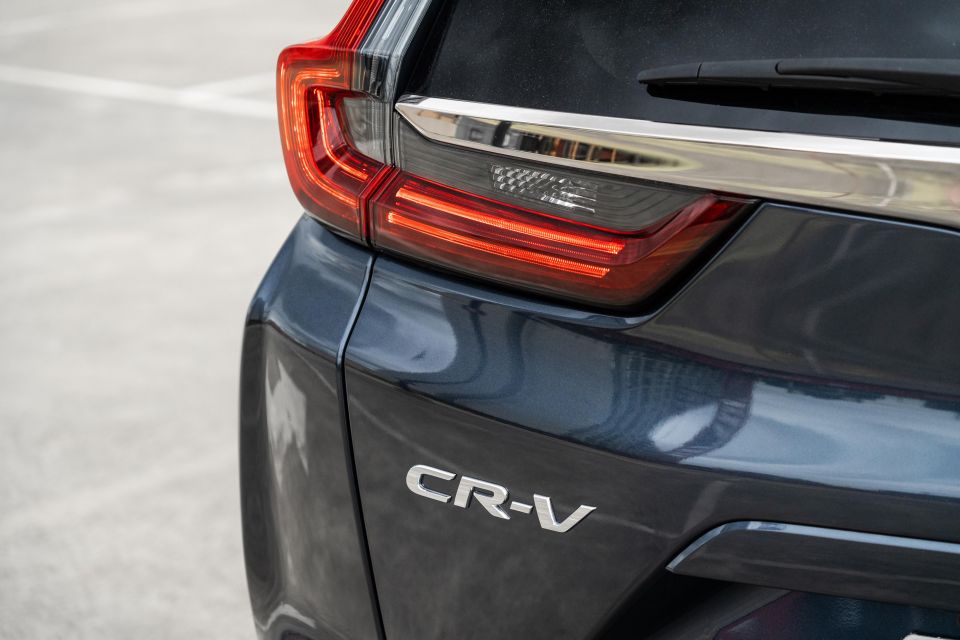
2022 Honda CR-V pricing:
Prices are drive-away
Key rivals include:
Prices exclude on-road costs unless specified
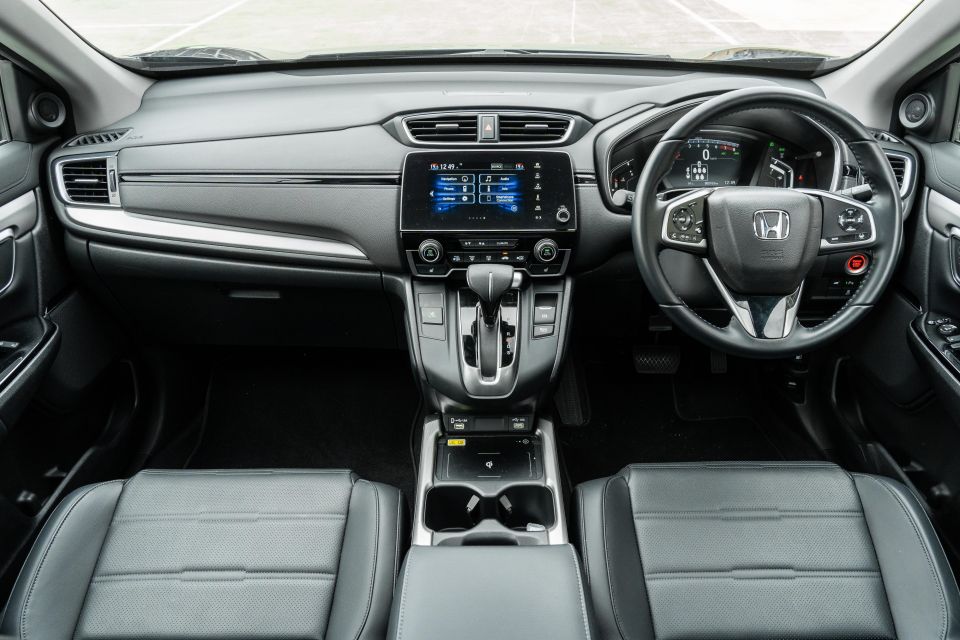
Buy your new car without the stress. It's fast, simple and completely free.

Great service from Travis and team, second time I have used this business would not hesitate to recommend them to anyone
Craig C.
Purchased a Ford Ranger in Sunshine Coast, QLD
CarExpert helped Craig save thousands on his Ford Ranger, now let us save you on your next new car.
Find a dealThe CR-V’s cabin has had the same basic design since 2017, with a refresh in 2020 bringing a rejigged centre console with better storage options and a wireless smartphone charging pad.
With an upright dashboard fascia and floating transmission selector, the CR-V’s front row gives off people mover vibes.
The driver is faced with a partially-digital instrument cluster, which encompasses a 7.0-inch display for the tachometer and speedometer readout, flanked by line gauges for the temperature and fuel.
It hasn’t changed since this generation launched and it’s feeling quite old-hat at this stage, from the video game-like graphics to the limited configurability. The plasticky steering wheel hub also looks old, and a bit cheap.

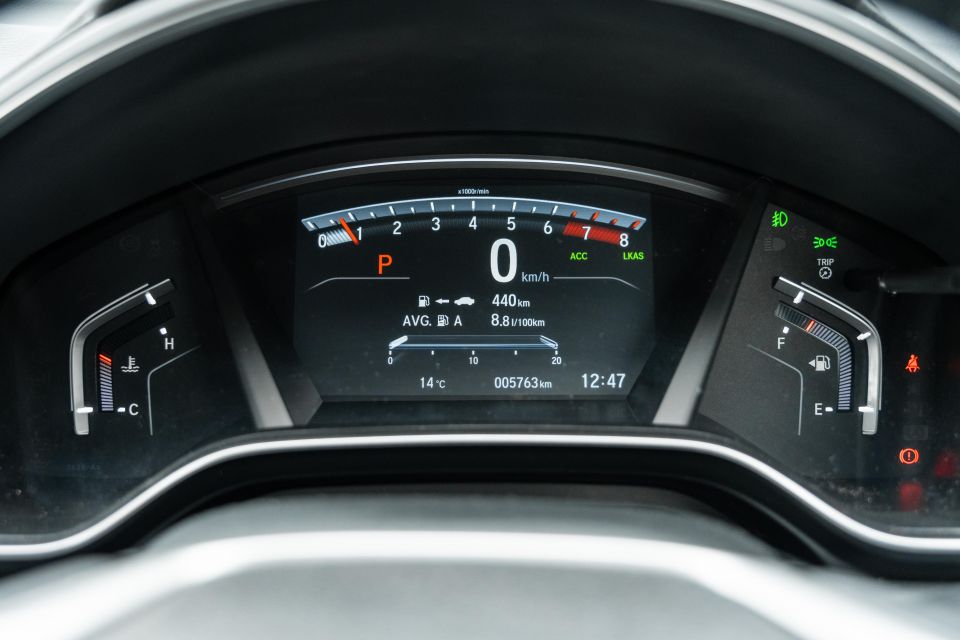
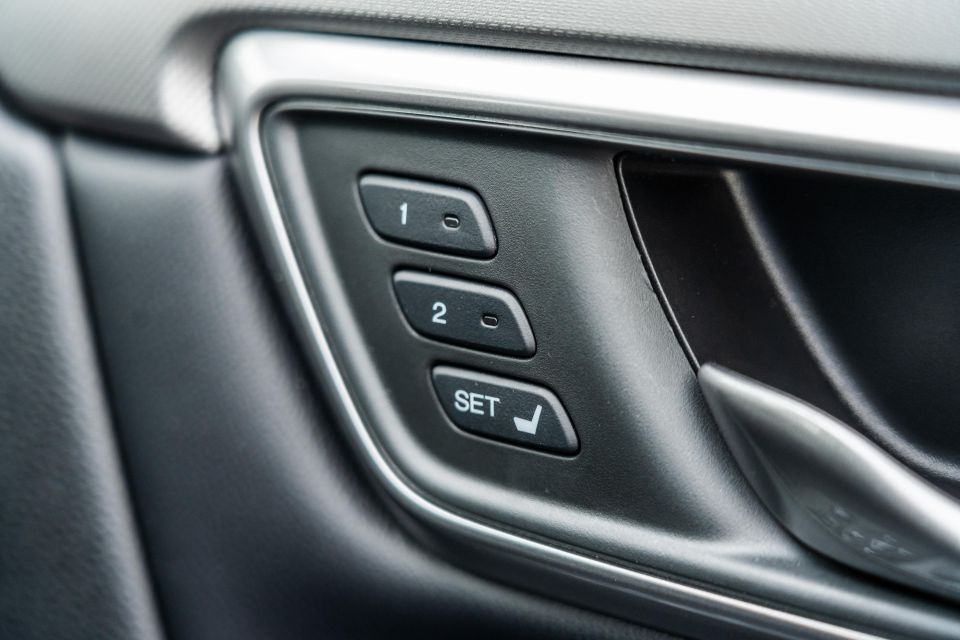
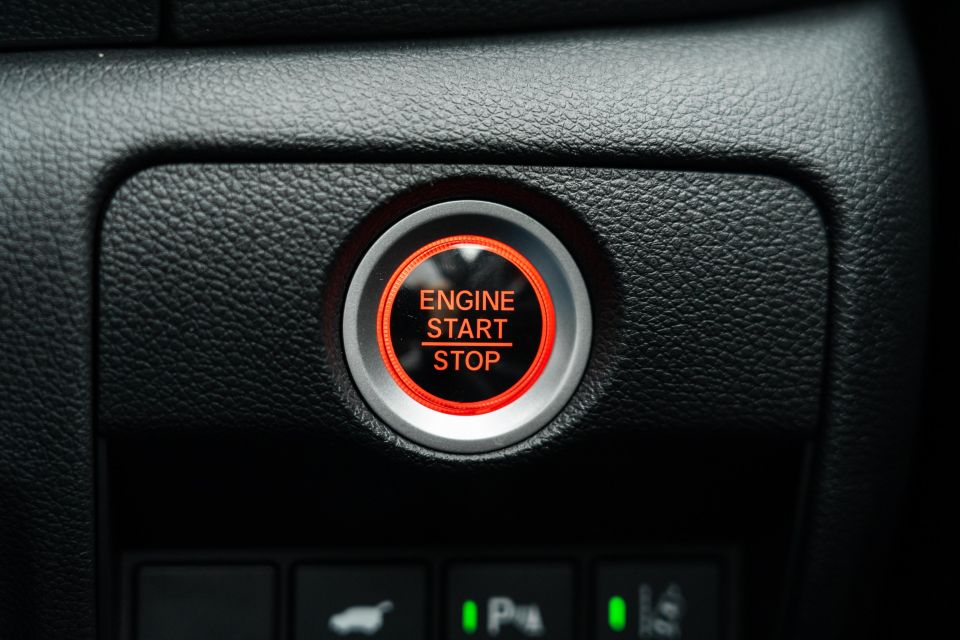
The leather-trimmed seats are pretty comfortable and give good levels of under-thigh support, and the driver gets full electric adjustment with two-position memory.
Three-stage heating also features on both front seats, but there’s no cooling like some rivals. We found that, while the seats are relatively supportive, the wide inserts mean the bolsters don’t quite hold you in from all angles if you’re on the thinner side.
Ergonomically the CR-V is pretty solid, with all controls and switchgear within easy reach of the driver, and regardless of whether it’s on the steering wheel or dashboard all functions are nicely grouped together and clearly labelled.
Storage is above average with a deep, configurable centre console cubby between the front seats, large door bins, and a cubby underneath the front-centre armrest.
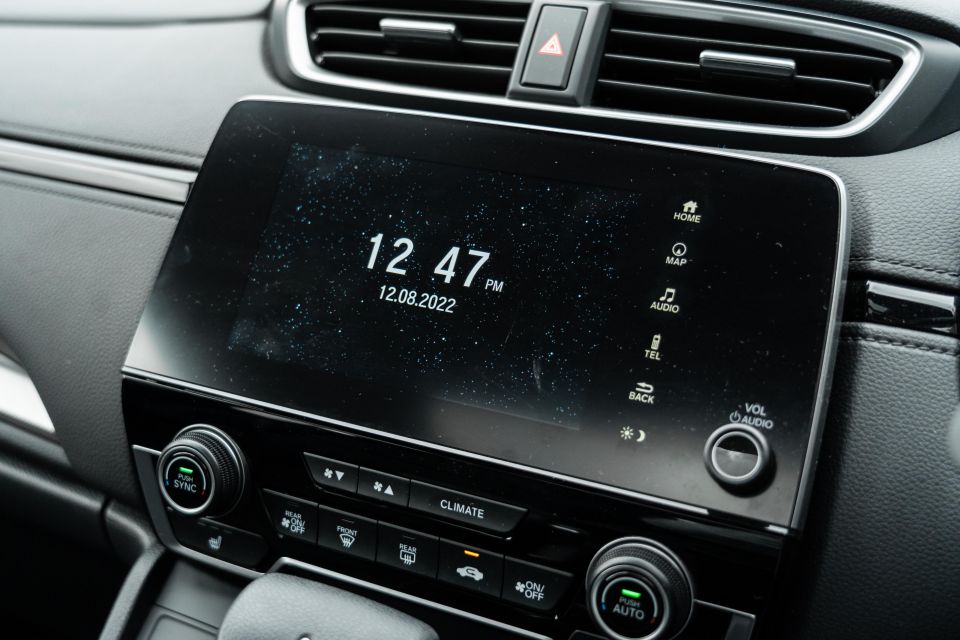
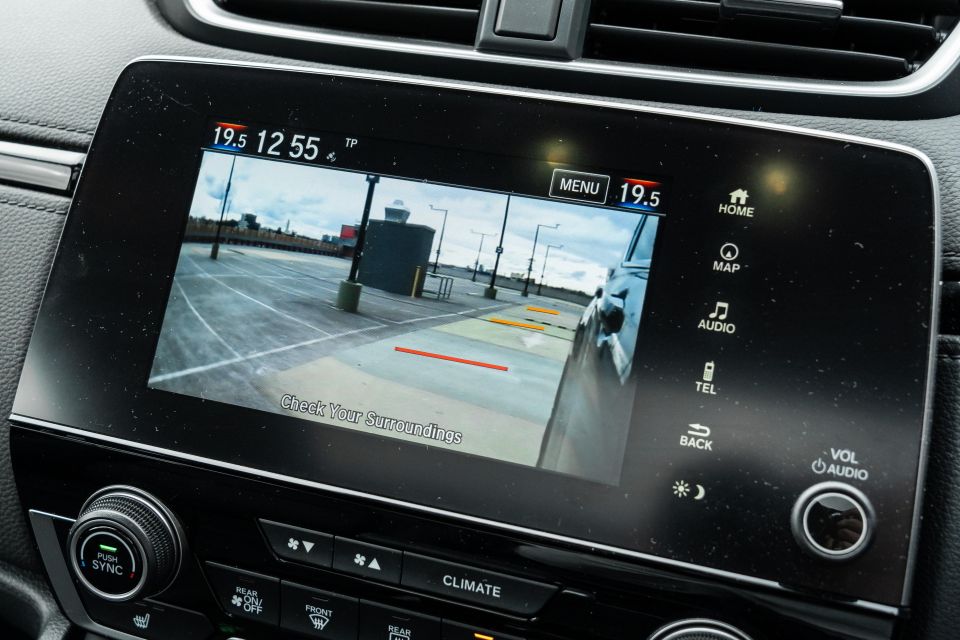
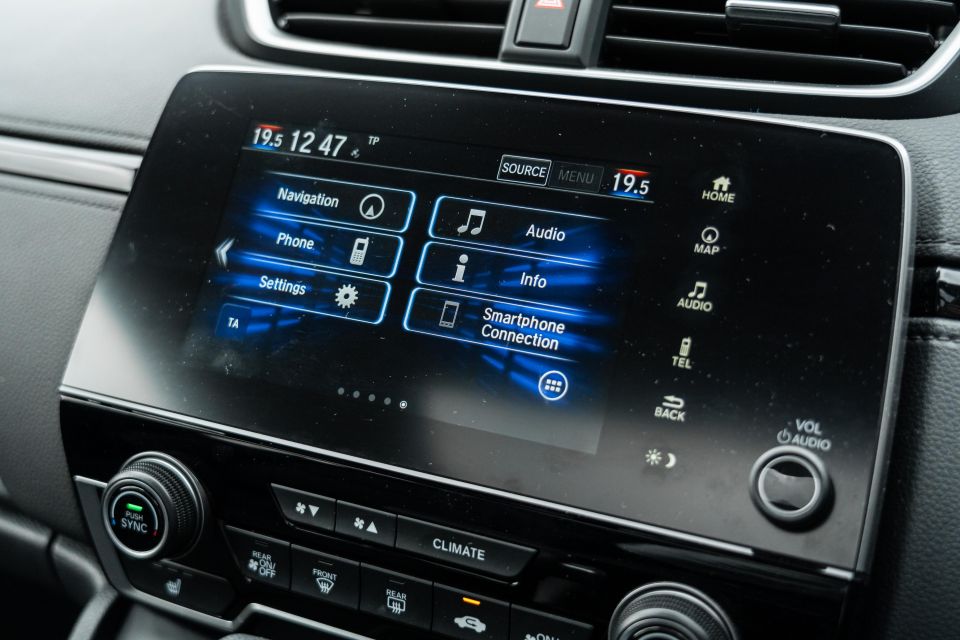
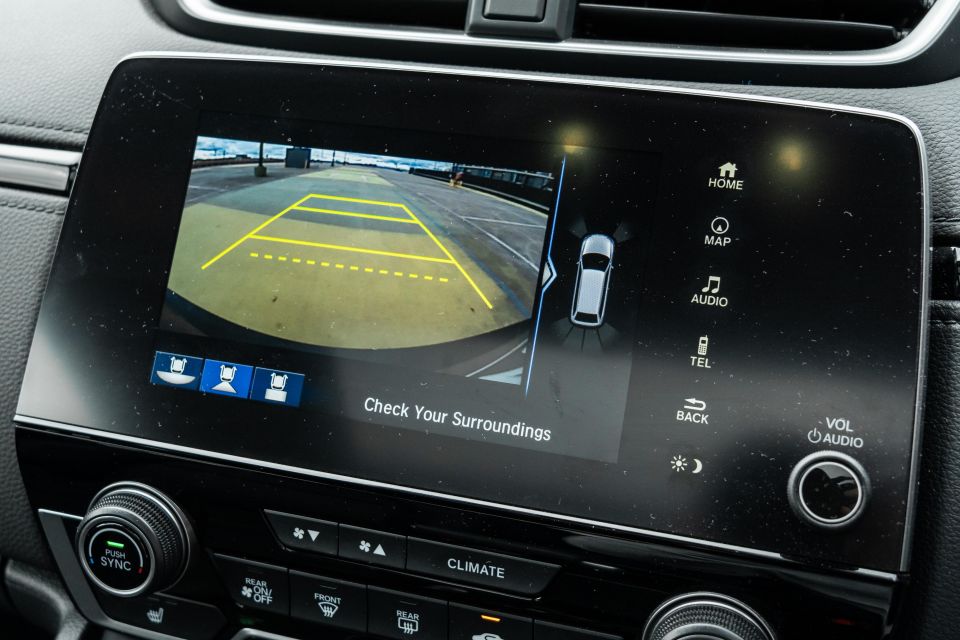
Display and infotainment tech wasn’t a CR-V strong suit when this generation launched, which is only underlined further in 2022.
The 7.0-inch touchscreen is small, and has pretty dated graphics and average response times.
Native satellite navigation comes as standard on the VTi L7 but the Garmin-sourced mapping is straight out of those cheap portable units you used to buy from Dick Smith. It’s quite underdone compared to most competitors, though you do get SUNA live traffic updates.
Thank goodness for Apple CarPlay and Android Auto, though I wish the wireless charging pad could securely hold my phone when wired in for mirroring. The eight-speaker sound system is pretty good, if not a standout at this price point where many rivals have branded systems with a bit more depth.
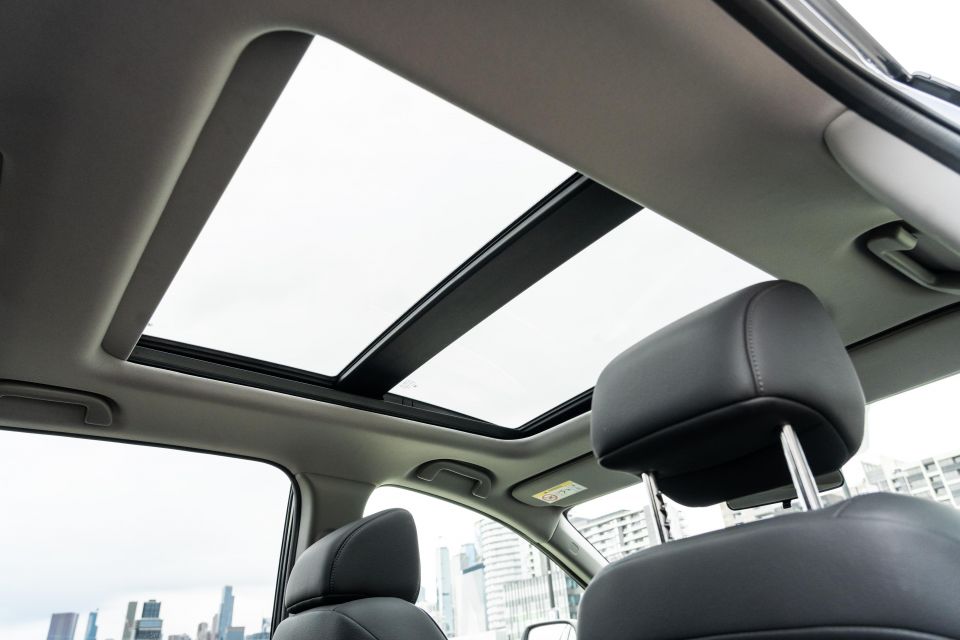
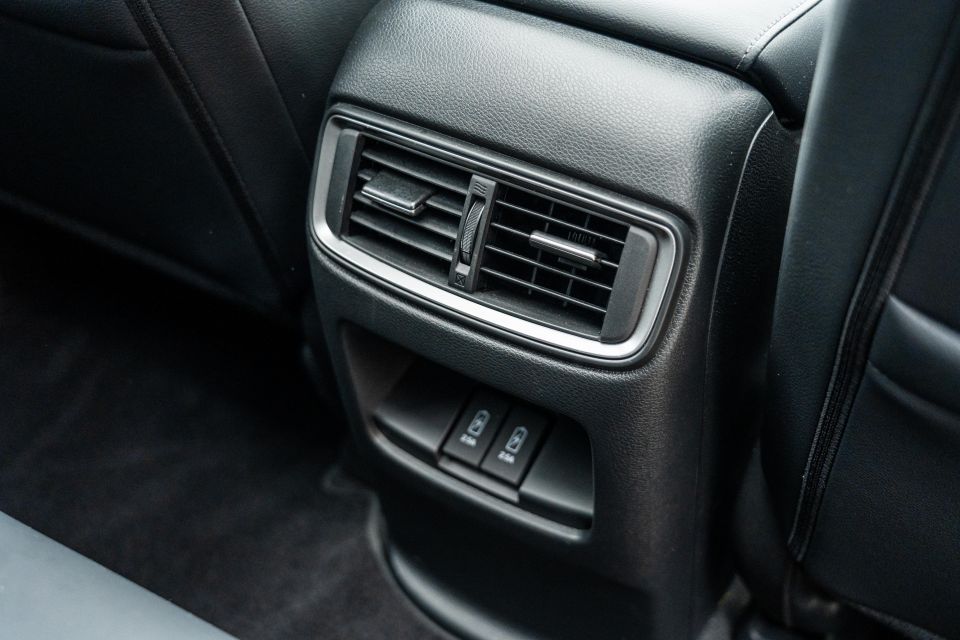
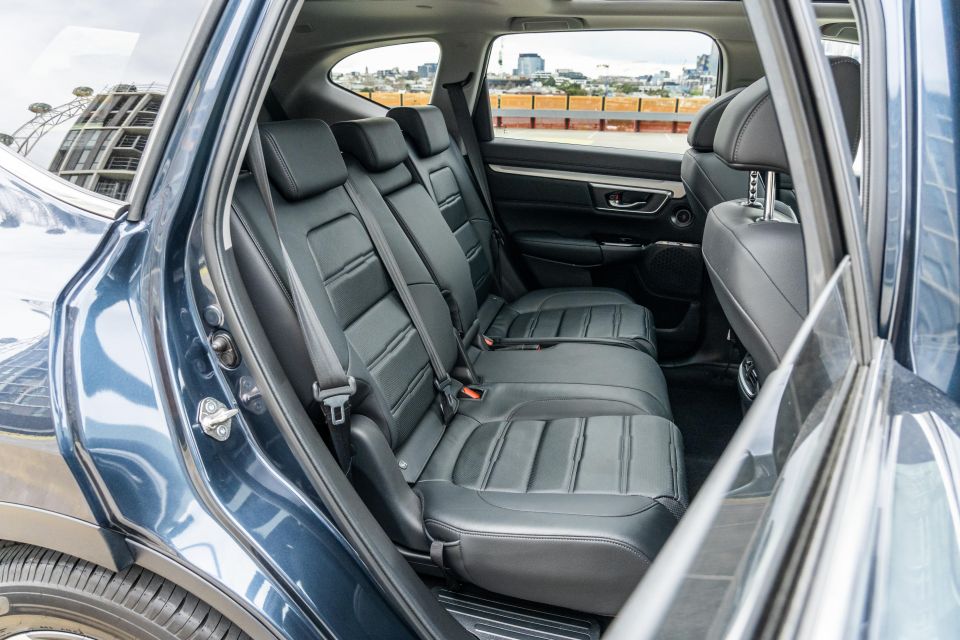
The CR-V’s boxy dimensions and long wheelbase have long earned it kudos for practicality in this generation, but the high-spec VTi L7 is quite compromised compared to the rest of the range.
Seven-seat CR-V models get sliding second-row seats to allow easier access to the third row as well as more legroom for the rearmost passengers, which means they sit a little higher than the fixed bench in five-seat grades.
Having the panoramic sunroof in this grade further eats into rear headroom, and even at my relatively average 6’1 height, my head was pretty firmly nudging the headliner. Scott Collie would break his neck if you went over a sharp bump hard enough.
It’s a glaring error in the seven-seater’s design, because legroom and knee room are otherwise above average for the segment. ISOFIX and top-tether points feature in the second row, so it’ll be great for kids – helped by the 90-degree-opening rear doors.
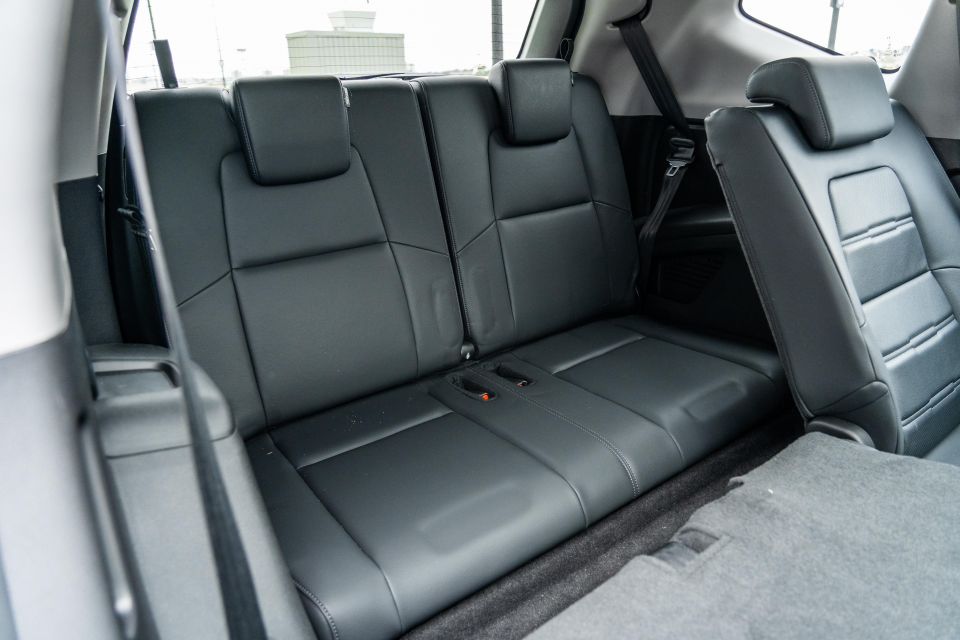

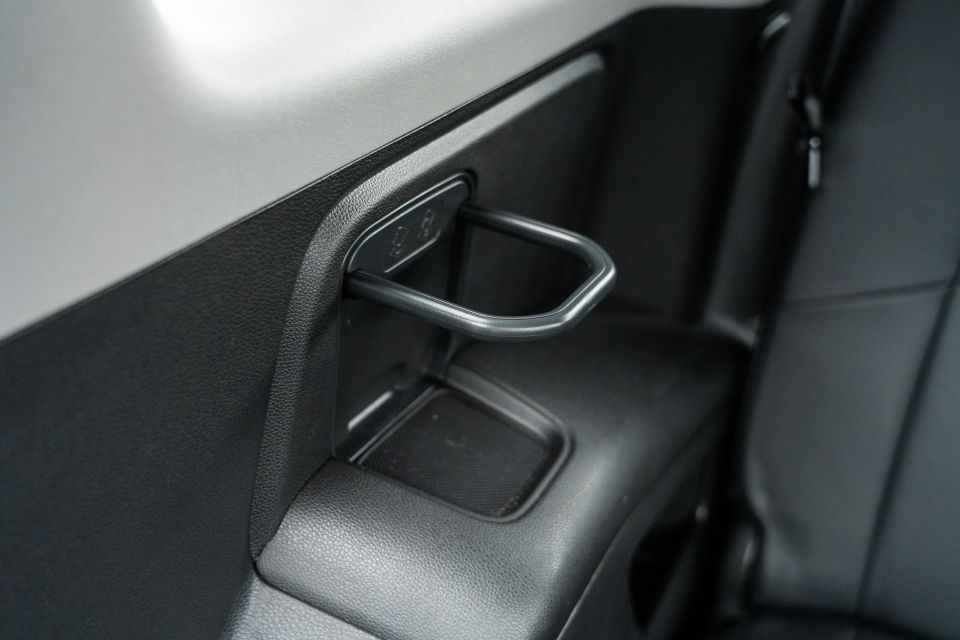
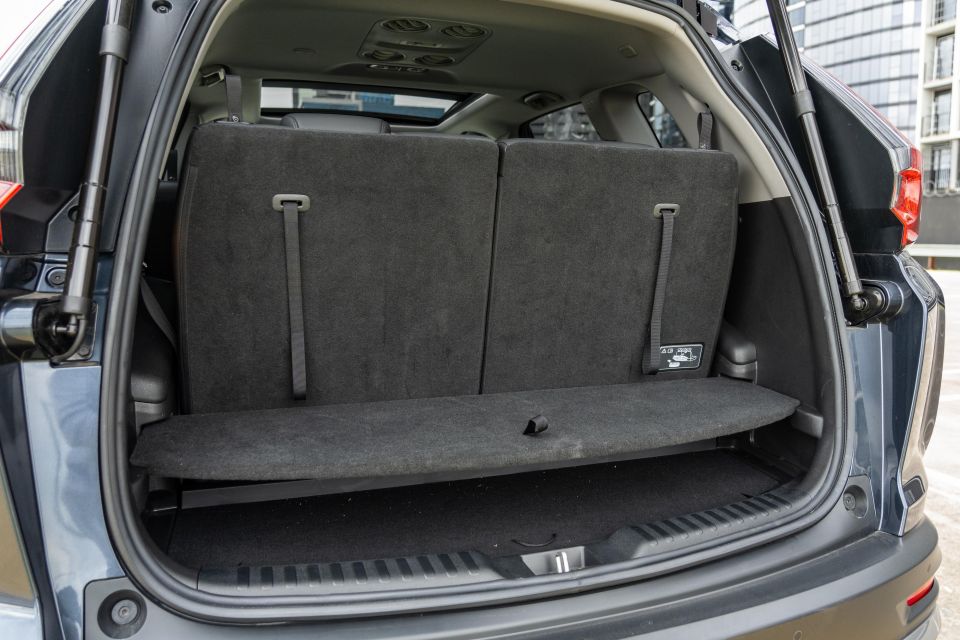
Like most vehicles in the segment, the CR-V’s third row is best left for kids. Think of it more as a 5+2 seater than a proper seven seater.
Amenities include fold-out cupholder hoops and ceiling-mounted vents, and getting in the third row is made easier by tumbling the second row forward. Leg, knee and foot room are tight for adults, though.
The third row doesn’t fold flat into the floor like rivals, though there’s a small adjustable floor extension that can be raised to make a flat bay. Regardless, it looks a little tacked on and ill thought-out.
Boot capacity is 150L with the third row up, 472L with the third row folded and 936L (to the window) or 1509L (to the roof) with the second row folded. A full-size alloy spare lives under the boot floor.
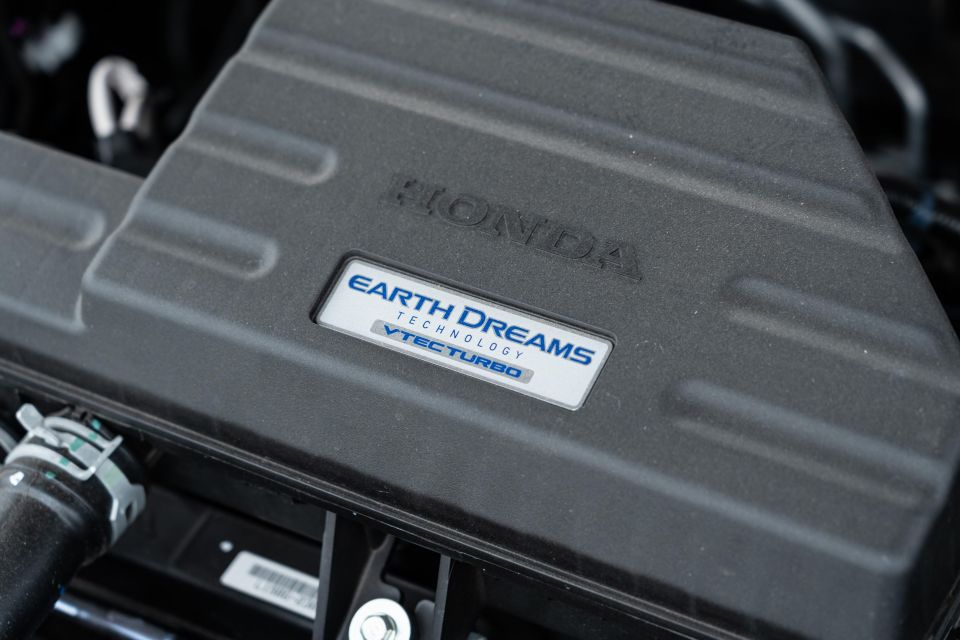
Powering all but the base CR-V variant is a 1.5-litre turbocharged four-cylinder petrol engine, quoting outputs of 140kW (5600rpm) and 240Nm (2000-5000rpm).
In the VTi L7, drive is sent to the front wheels exclusively via a continuously variable transmission (CVT). On-demand all-wheel drive is available but only on the top-spec CR-V VTi LX.
Honda claims the CR-V VTi L7 will consume 7.3L/100km on the combined cycle, with emissions rated at 166g/km (CO2).
All versions of the Honda CR-V are rated to run on 91 RON regular unleaded, while the fuel tank capacity is listed as 57 litres.
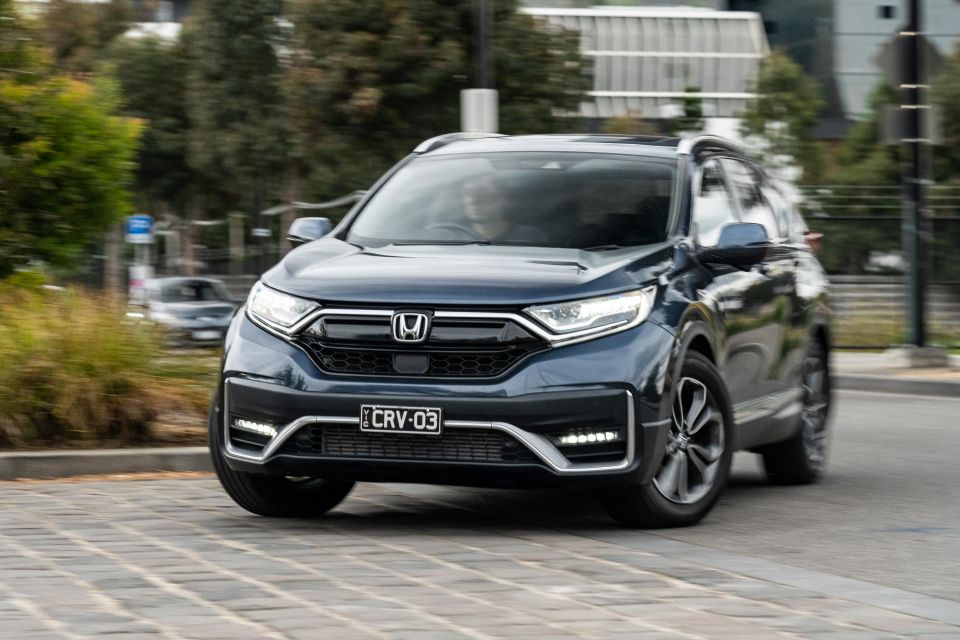
Given this VTi L7 variant runs effectively the same drivetrain as the VTi X I reviewed some months ago, there’s little difference to my impressions here – for better and for worse.
The current generation CR-V has been praised since its launch in 2017 for its eager dynamics and well-sorted ride, and the vehicle on test here showed the same positive attributes.
It’s quick to respond to steering inputs with nice accuracy and fluidity, and has a hunkered-down feel that inspires confidence at high speeds and on winding roads. Having such a small engine up front no doubt helps for a light front-end feel.
Speaking of the engine, the 1.5-litre turbo petrol’s 140kW/240Nm outputs are up there for the class and its relative displacement, obviously if you discount the likes of the Ford Escape, Mazda CX-5 and Volkswagen Tiguan with their larger, higher-output turbo fours.
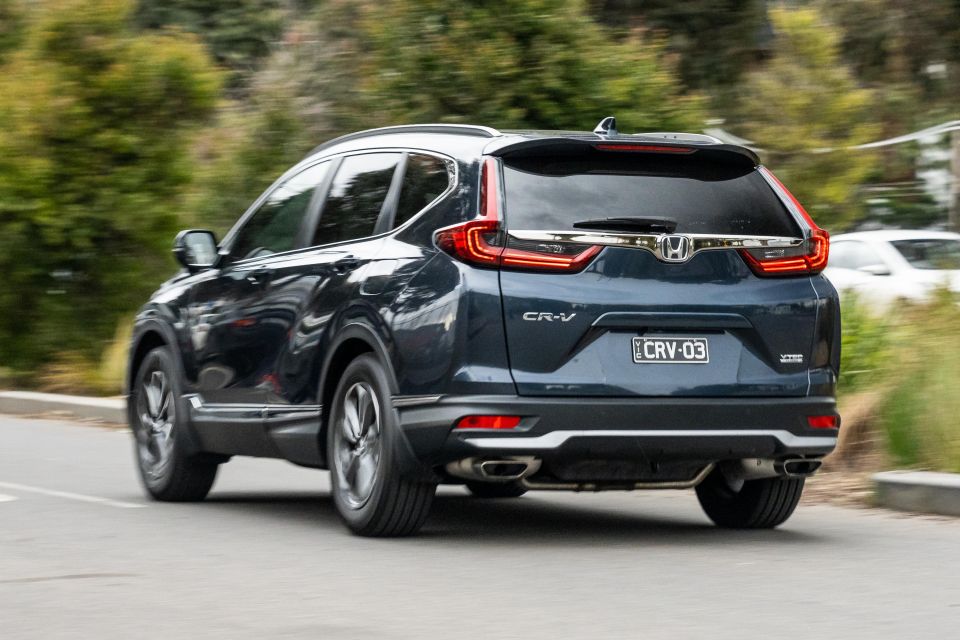
While those outputs are impressive, the driving experience is pretty underwhelming, largely due to the CVT automatic which feels like it’s sapping the life out of the engine.
Performance off the line is best described as ‘relaxed’ but it’s nicely linear, and the transmission tends to hold revs between 2000 and 3000rpm where the torque band is. There’s no programmed ‘steps’ like some rivals, meaning the engine just drones and stays in this monotone, buzzy tone while you’re accelerating.
Because of this it doesn’t feel particularly quick or effortless, as the engine sounds laboured under throttle, though it does get up to signed speed limits deceptively quickly with a bit more throttle input.
You can use the paddles behind the steering wheel to shift through virtual ‘ratios’, but take my word for it – don’t.
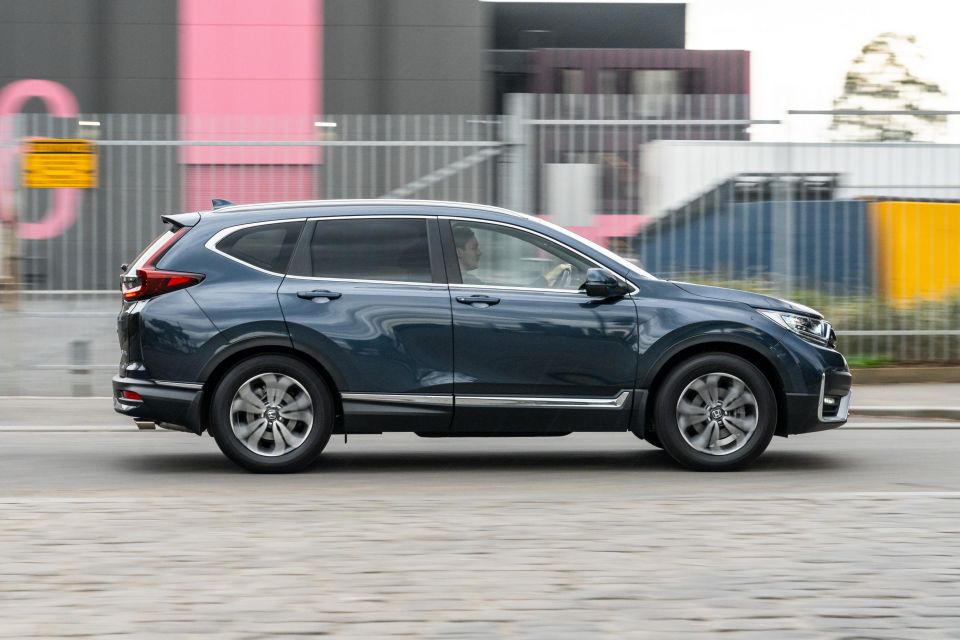
Engine performance isn’t very inspiring, but for the target buyer it’s less of a priority. Plus, the CR-V has better low-down torque than the naturally-aspirated Nissan X-Trail or Mitsubishi Outlander – although experience in both rivals still leaves the CR-V with the buzziest, droniest engine under load.
Despite its age the CR-V is still one of the better-riding vehicles in the class even without a local suspension tune and larger 18-inch alloys as tested. It strikes a great balance between comfort and dynamics, and isn’t upset by sharp-edged imperfections or sudden undulations.
The lack of all-wheel drive never really presented itself as a major drawback during our time with the CR-V VTi L7 even with some pretty wet Melbourne weather, though I understand plenty of prospective drivers just prefer the security of all-paw traction for rainy days or if you frequent loose surfaces.
Visibility is likewise very good thanks to the plentiful glasshouse, large mirrors, front and rear parking sensors, and a reversing camera with dynamic guidelines – even if the resolution leaves a bit to be desired against current rivals.
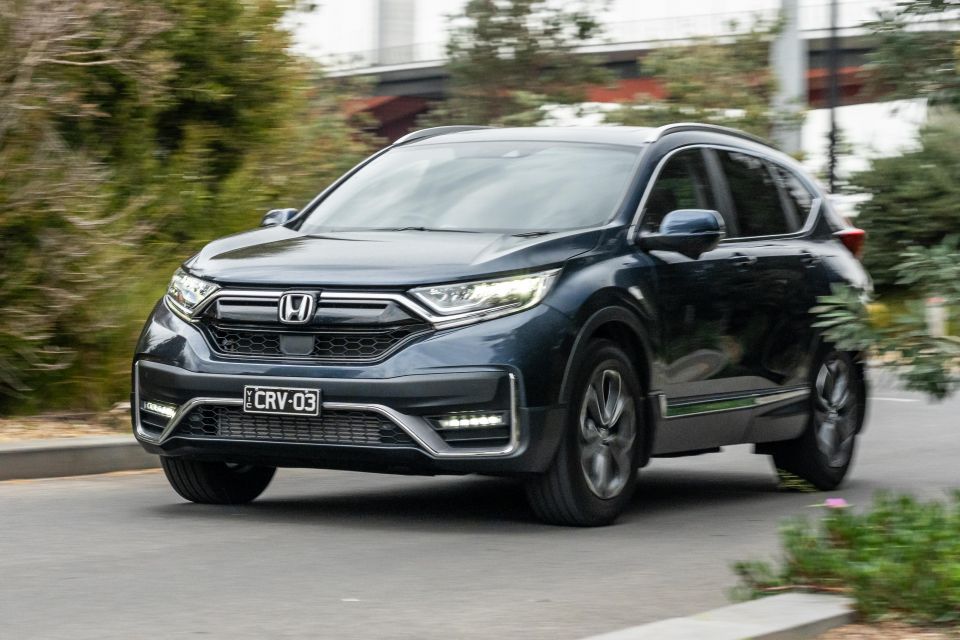
On the topic of cameras and gripes, it’s a shame the current CR-V was never updated to offer conventional blind-spot monitoring on both sides of the vehicle, instead persisting with Honda’s LaneWatch passenger-side camera. The US-market model (which is made there) made this move some time ago, so it’s not as if the current generation hasn’t been engineered for it.
While I understand the merit behind the idea, the LaneWatch camera offers average resolution, and the video feed takes over the infotainment system each time you indicate – though pressing the button at the end of the stalk can quickly turn it off. It’s just not as intuitive as Hyundai and Kia’s Blind Spot View Monitor, and it only works on the left-hand side of the vehicle.
Cabin refinement is another area in need of improvement. In isolation the cabin lets in an acceptable, not deafening level of engine, wind and road noise. However, after a back-to-back drive with a base Volkswagen Tiguan Allspace, the CR-V felt echoey and tinny by comparison.
It’s a shame Honda didn’t put more effort into sound insulation and overall driving refinement as part of the mid-life refresh, and a quieter petrol-electric hybrid option – as offered in Japan, Europe and the US – would further enhance refinement and reduce powertrain noise levels particularly around town.
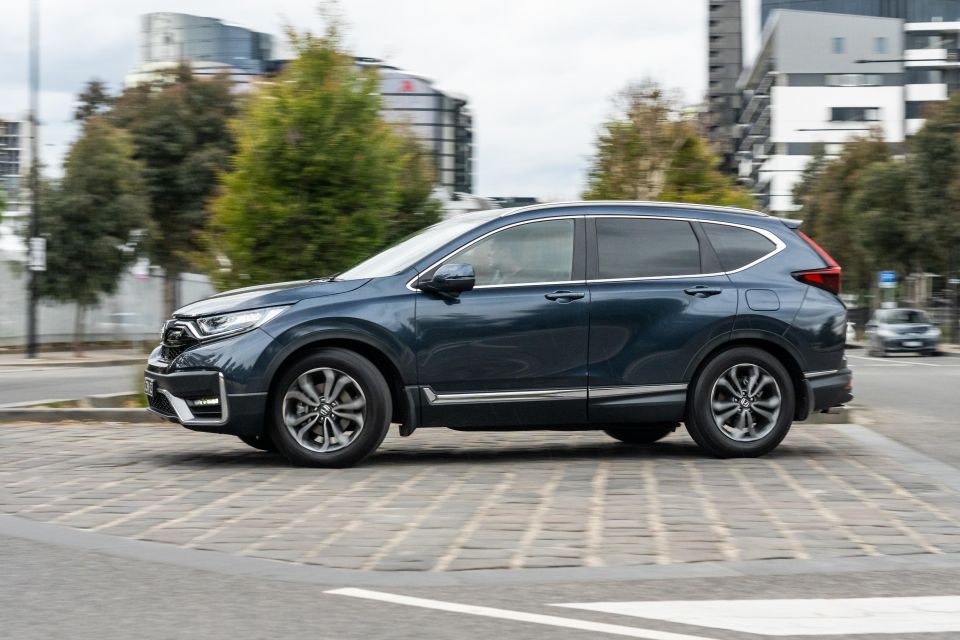
Where expert car reviews meet expert car buying – CarExpert gives you trusted advice, personalised service and real savings on your next new car.
The Honda Sensing suite of active assists likewise feel a step or so behind newer rivals.
As we’ve noted in previous reviews, the adaptive cruise control with Low Speed Follow works fine most of the time, especially if there’s little to no traffic. However it has a habit of jabbing the brakes for no apparent reason, which is particularly frustrating if you’re overtaking in the right lane with someone following closely behind.
The active lane-centring function works well, though the automatic high-beam is a little eager to engage and defaults to on every time you start the car – I had a couple of occasions where in suburban areas it didn’t switch off on its own fast enough and I was flashed by oncoming drivers.
While it’s not a poor showing from Honda’s mid-sizer, the CR-V really starting to feel its age on the road – particularly this VTi L7 at $50,000 drive-away. The new model can’t come soon enough.

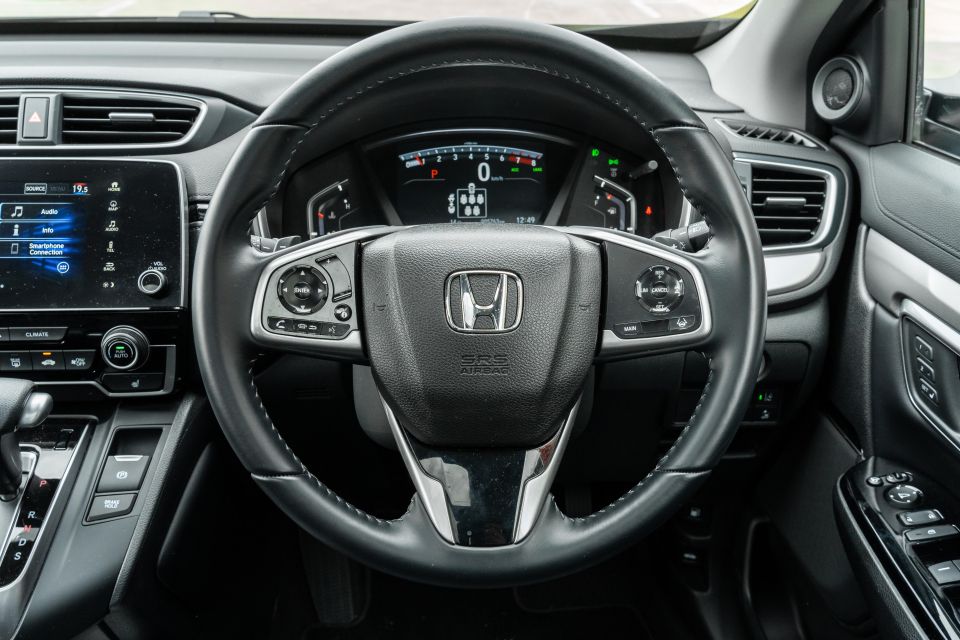
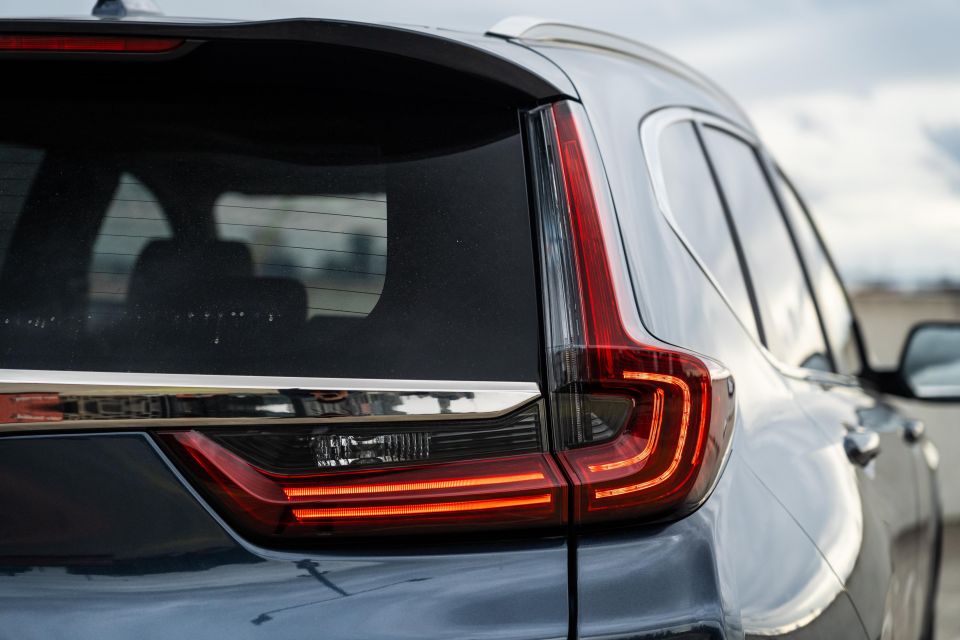

CR-V VTi L7 highlights:

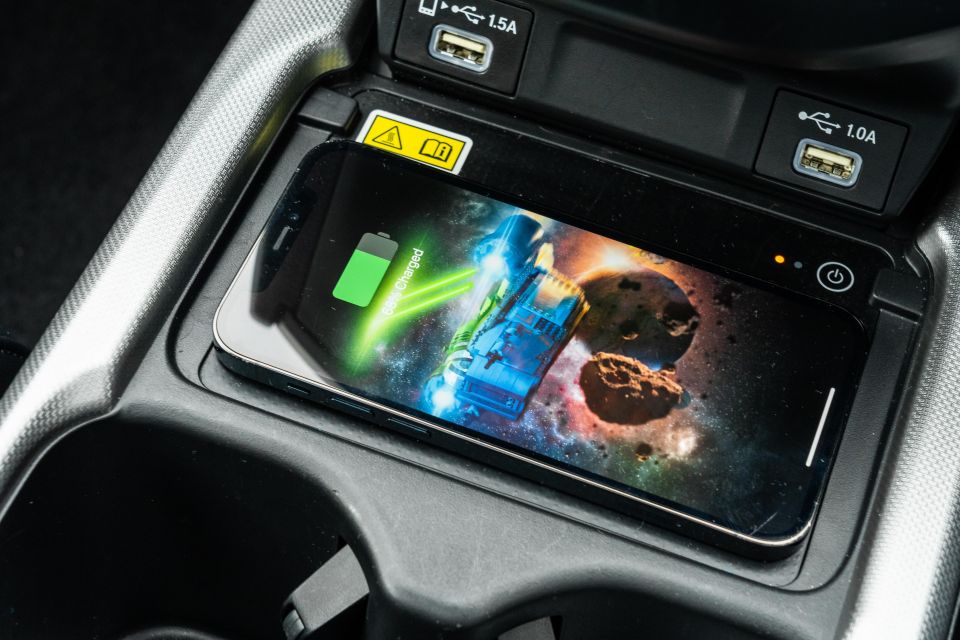
Features carried over from lower grades include:
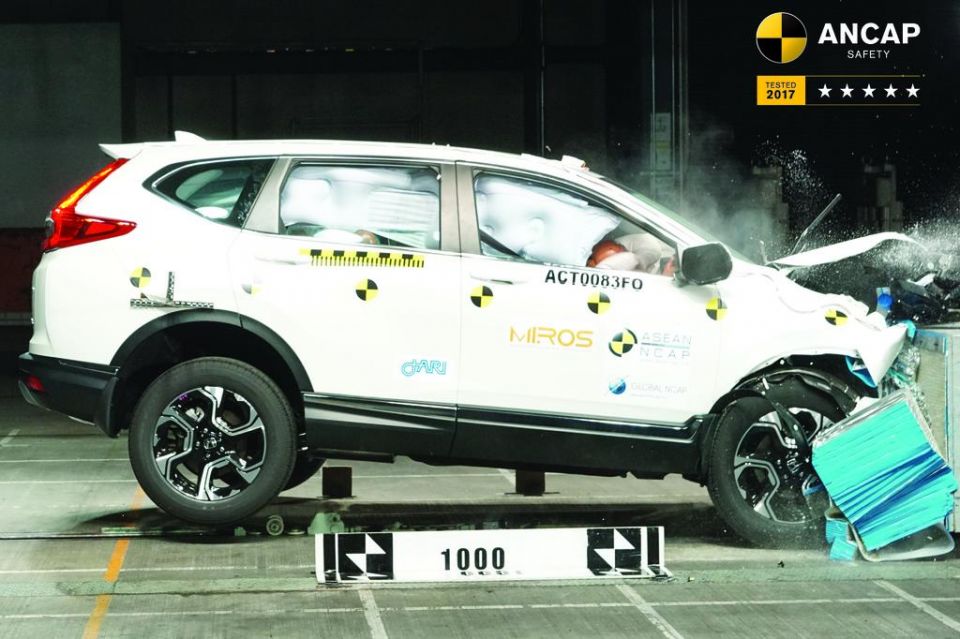
All versions of the Honda CR-V wear a five-star ANCAP safety rating with 2017 date stamp, based on tests conducted by ANCAP and ASEAN ANCAP.
Using an older test criteria, the CR-V scored 35.76 out of 37 overall, including 16.00 out of 16 for the side impact test, 2.00 out of 2 for the pole test, and 14.76 out of 16 for the Frontal Offset assessment. Whiplash protection was rated Good, pedestrian protection deemed Acceptable.
The entry-level CR-V Vi misses out on the Honda Sensing active safety suite, meaning it lacks features like autonomous emergency braking (AEB) and lane-keep assist. CR-V VTi grades and up (including the VTi L7 on test), get the full tech portfolio as standard.
All models feature six airbags, including dual frontal, front-side and side-curtain airbags.
Standard features (CR-V VTi and up) include:
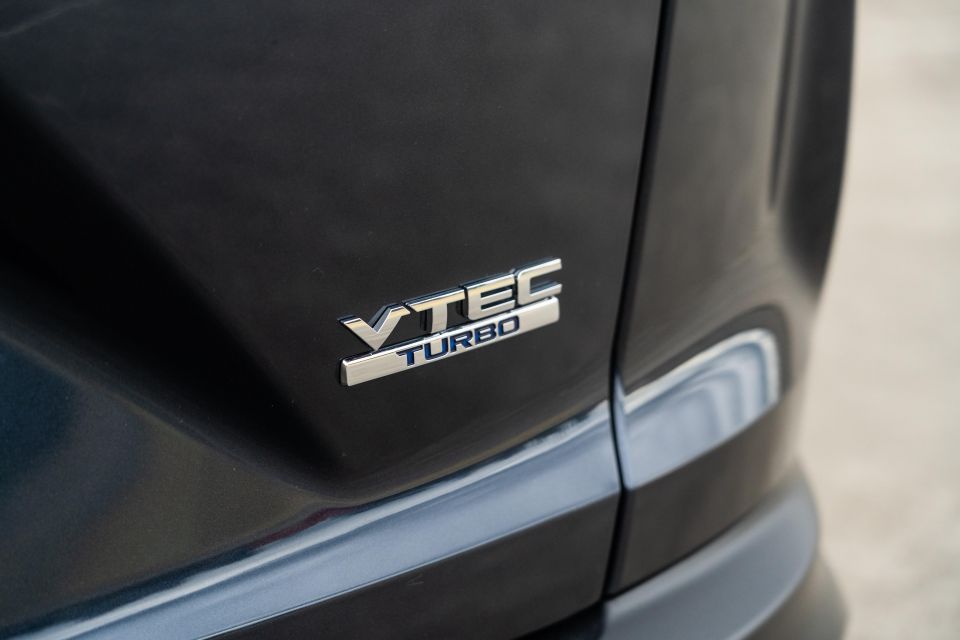
The Honda Australia line-up is covered by a five-year, unlimited-kilometre warranty with five years of premium 24/7 roadside assistance.
Scheduled maintenance is required every 12 month or 10,000 kilometres – whichever comes first.
Honda has become a leader when it comes to affordable servicing costs, with the first five visits priced at $125 a pop. That’s cheaper than even Toyota.
As for real-world fuel consumption, the CR-V hovered between high eights and low nines during our week of testing, which included daily commuting to and from the office which mixed in high-traffic CBD roads with freeway stints.
It’s a bit up on Honda’s combined claim, though not far off the brand’s urban figure of 9.2L/100km. The CR-V’s fuel use jumps quickly around town, not helped by the vehicle’s lack of idle stop/start technology.
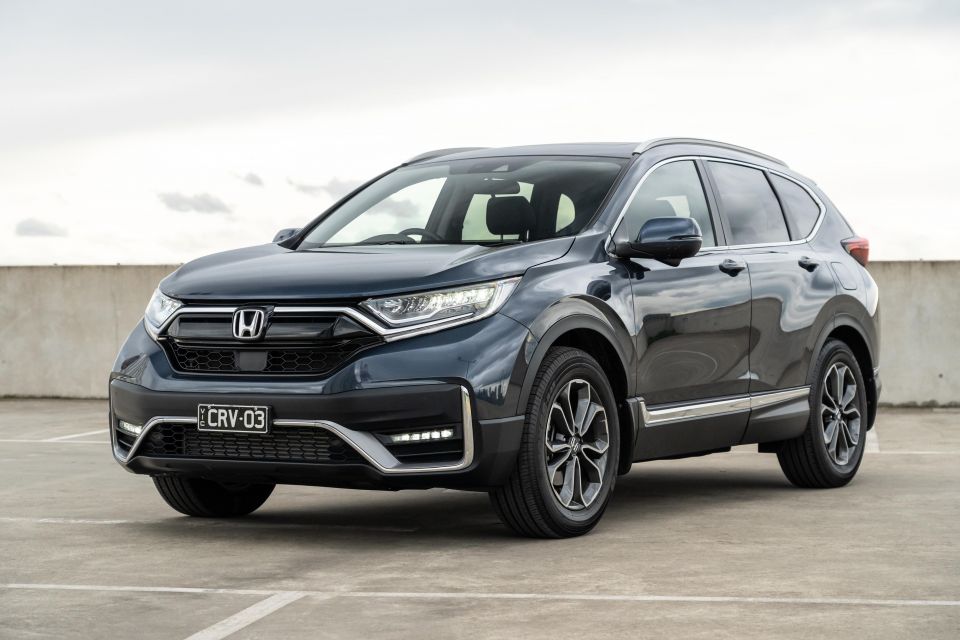
The top-spec three-row CR-V has all the ingredients to be a great package for Australian families, but in execution it misses the mark in several areas.
Poor second-row headroom and a compromised boot are glaring oversights for the CR-V VTi L7, while the dated infotainment and driver assistance systems are simply off the pace compared to rivals like the Mitsubishi Outlander, Skoda Kodiaq and Volkswagen Tiguan Allspace.
At nearly $50,000 drive-away the CR-V’s value equation isn’t as strong as lower-spec grades, and is priced too close to entry versions of physically larger and more accomplished vehicles like the Hyundai Santa Fe, Kia Sorento and Mazda CX-8.
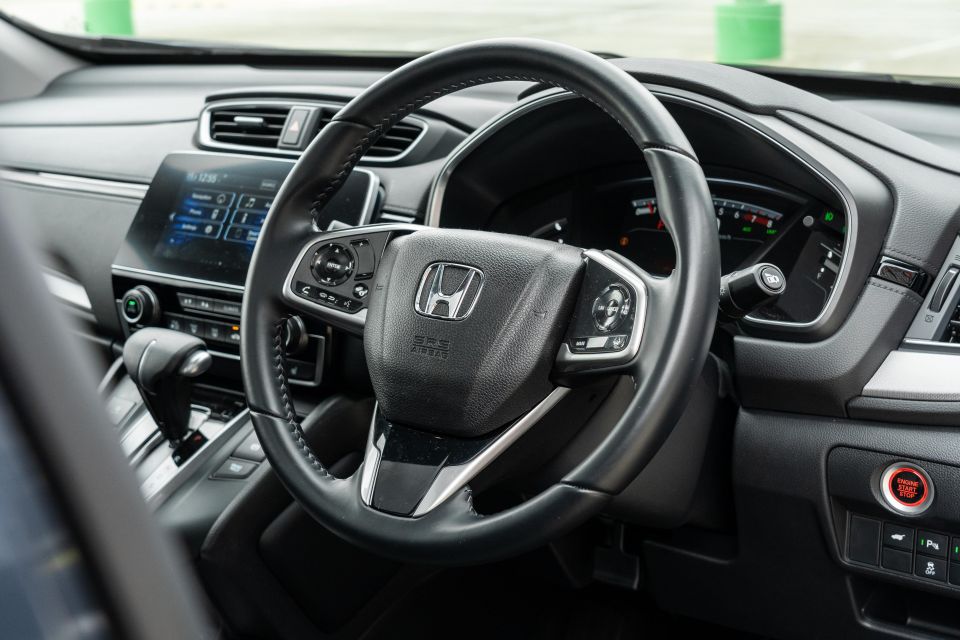
The comfortable ride, keen dynamics and smooth driveline aren’t enough to save the up-spec seven-seater at this price point.
The VTi 7 makes a lot more sense for those wanting an affordable seven-seat SUV. It undercuts just about every rival, packs enough of the good stuff without really missing out on key necessities, and thanks to the lack of a sunroof should be a lot more accommodating in the rear for taller passengers.
Is it an Odyssey replacement? No. But the added versatility of a third row is a drawcard the CR-V has over most rivals in the mid-size SUV segment.

Click the images for the full gallery
MORE: Everything Honda CR-V
Where expert car reviews meet expert car buying – CarExpert gives you trusted advice, personalised service and real savings on your next new car.
James Wong is an automotive journalist and former PR consultant, recognised among Australia’s most prolific motoring writers.


Josh Nevett
22 Hours Ago
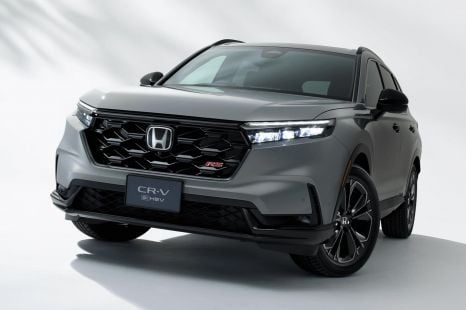

James Wong
3 Days Ago


Derek Fung
3 Days Ago


CarExpert.com.au
6 Days Ago
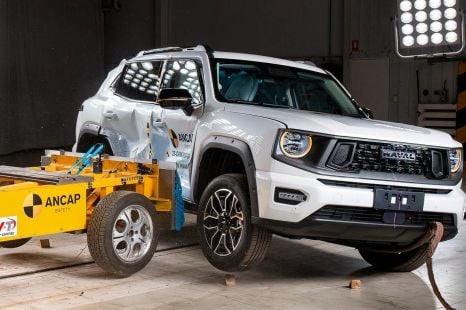

James Wong
6 Days Ago
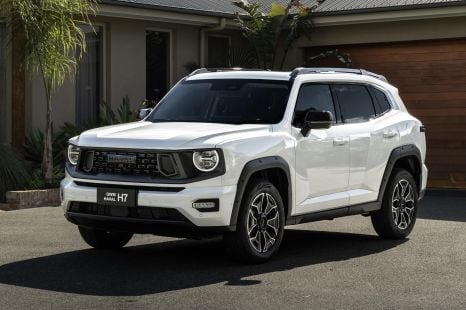

William Stopford
6 Days Ago